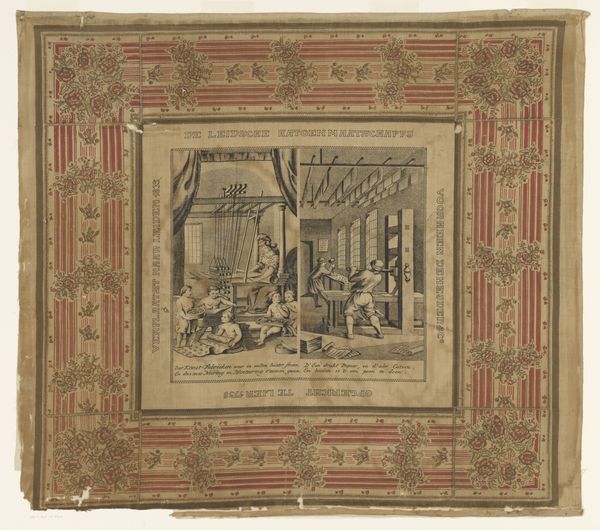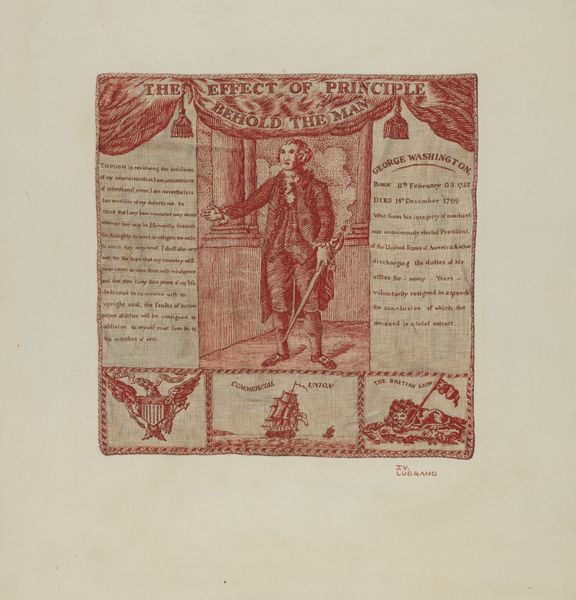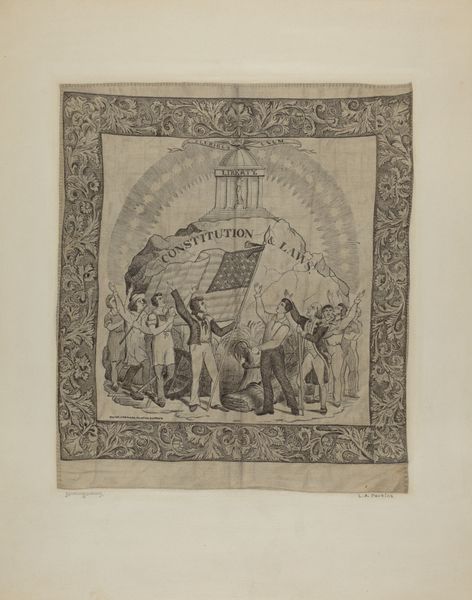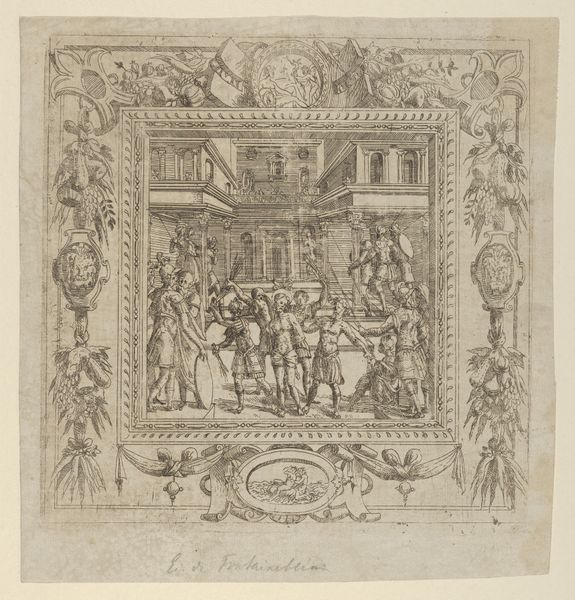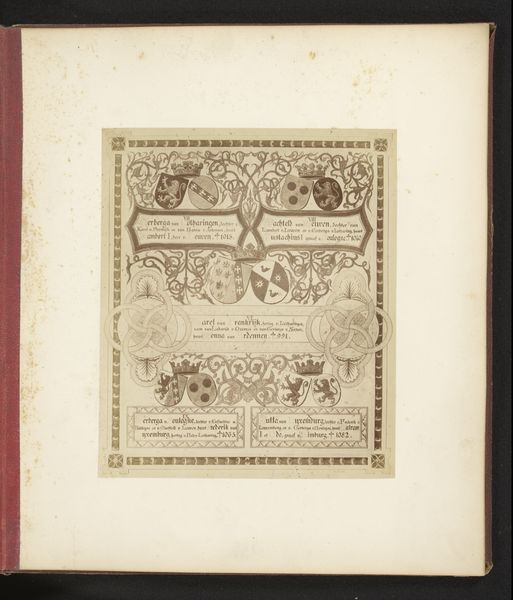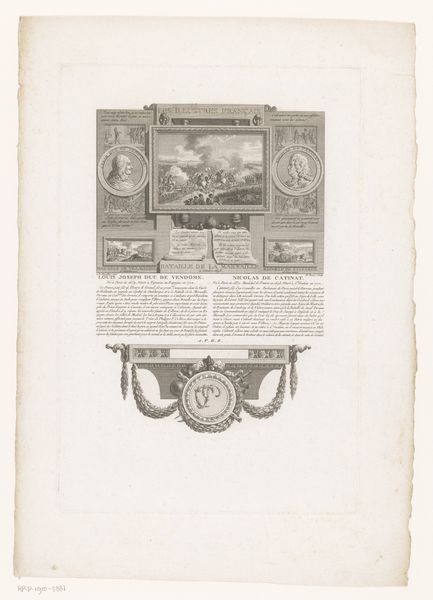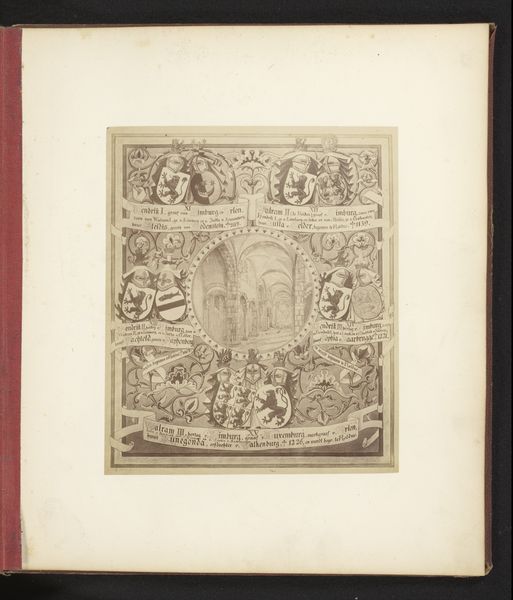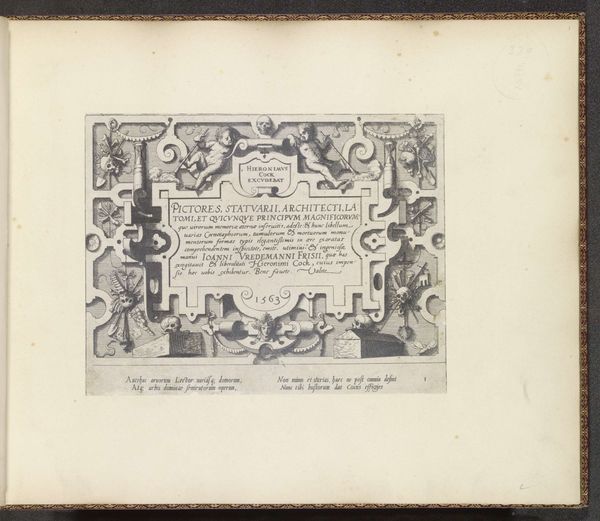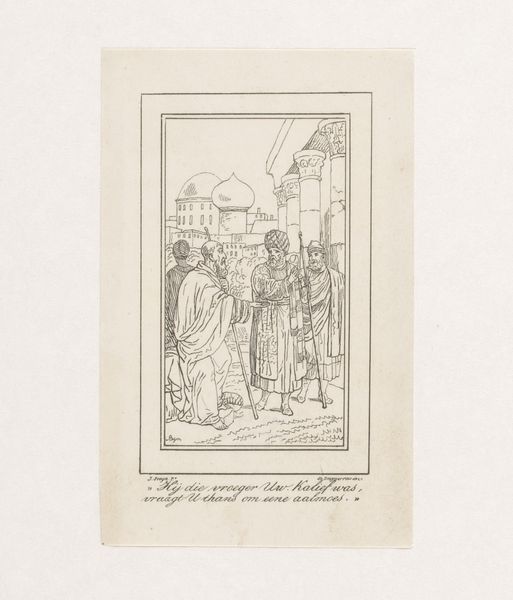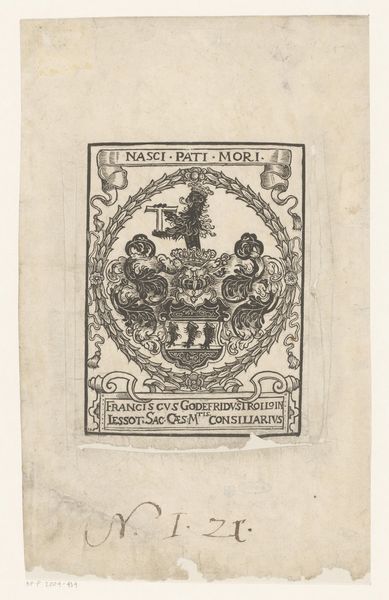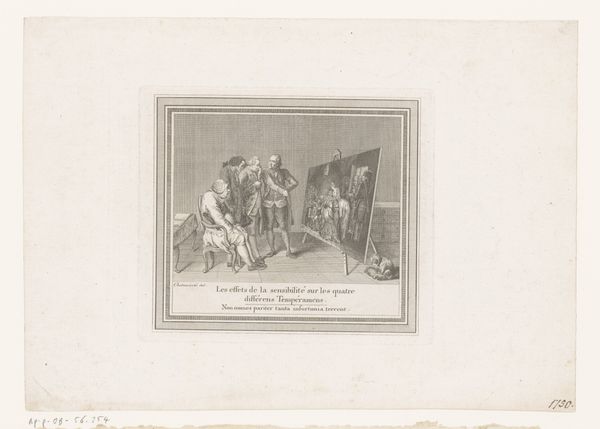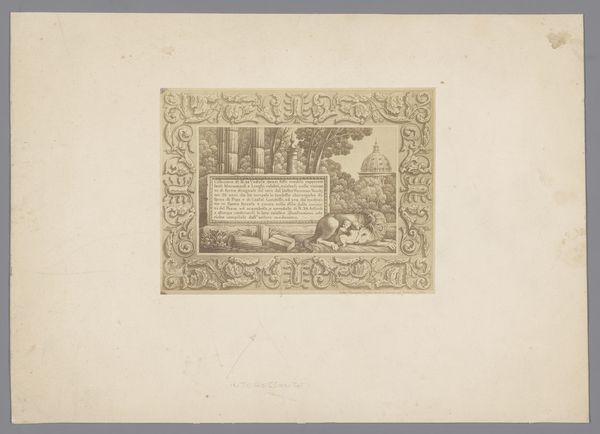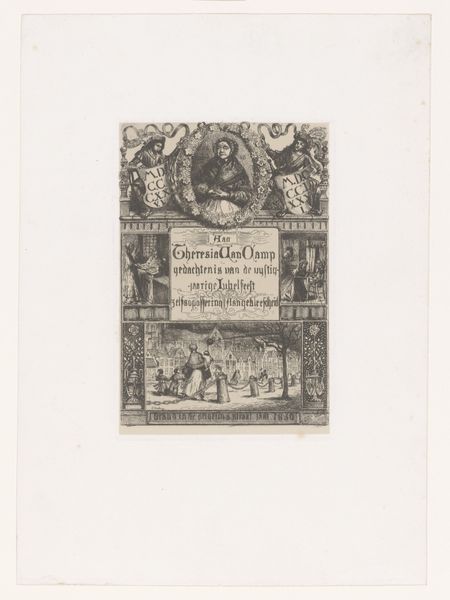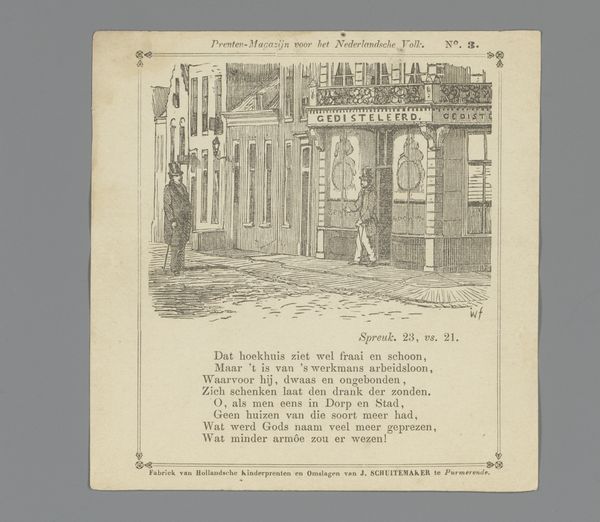
graphic-art, mixed-media, print, textile, poster
#
graphic-art
#
mixed-media
#
dutch-golden-age
# print
#
textile
#
poster
Dimensions: height 86.0 cm, width 93.5 cm
Copyright: Rijks Museum: Open Domain
Curator: Let’s take a look at this fascinating textile, "Doek van katoen," which translates to "Cotton Cloth." It dates back to 1918 and was produced by De Leidsche Katoenmaatschappij. It uses a mixed-media approach, combining graphic art and printing on, well, cotton. What are your initial thoughts? Editor: Immediately, I get a sense of historical labor and artistry, though rendered in almost a flattened, illustrative style. It’s quaint, nostalgic... perhaps a little melancholic considering the circumstances alluded to in the text around the central images? Curator: Indeed. The surrounding text reveals this piece served as an advertisement. It directly references challenges due to a cutoff of cotton supply from America, likely related to World War I. This forced them to halt their weaving operations, though fortunately their printing business could continue on diverse articles. The ad essentially invites customers to bring in their own materials for printing. Editor: So it's an appeal to national and local solidarity, almost like saying "we're still here, support our local business during these difficult times," woven into a visually appealing textile advertisement? That adds depth— it's not just promoting goods but resilience. Curator: Exactly! And the imagery, on close inspection, offers a glimpse into their workshop, doesn’t it? We see people engaged in weaving and printing, rendered in a way that evokes earlier artisanal traditions. There are even lists detailing items made with the company: shirts, voile, tea cozies, batik prints… the inventory reveals a diverse and productive environment. Editor: It makes me wonder about the individuals who crafted it and those who would have purchased it. It's more than a piece of cloth; it encapsulates an era and all of the political and economical turbulence therein. There's a story here in the symbolic gestures the designer included. Curator: I find the continuity striking—how the techniques and symbols used echo much older artistic traditions, demonstrating how the visual vocabulary adapts to carry different messages over time. In this instance the older artistic tradition blends with an attempt to reach a diverse audience and also keep workers employed when global issues had brought import of vital raw material to a standstill. Editor: And for me, this piece underscores the deeply human element inherent in commercial endeavors. Even amidst difficulty, it exudes this quiet dedication. It reminds you there are faces, intentions and hands behind every object we acquire. A sobering but significant consideration!
Comments
No comments
Be the first to comment and join the conversation on the ultimate creative platform.
